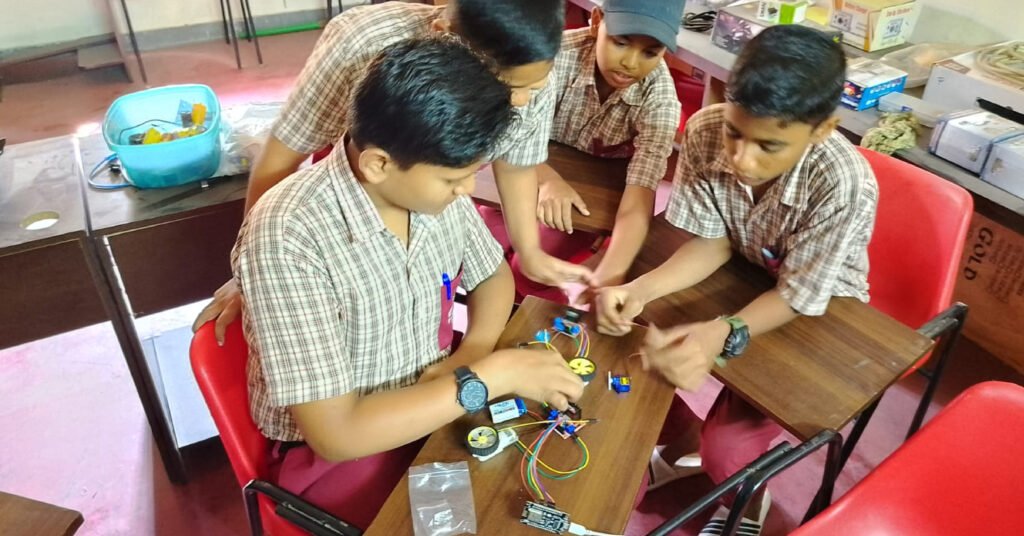In India, STEM (Science, Technology, Engineering, and Mathematics) education is at the forefront of creating qualified people, fostering creativity, and advancing technological development. The nation’s STEM education system has seen both notable advancements and enduring difficulties in recent years. The purpose of this article is to examine the state of STEM education in India, as well as its importance, difficulties, and innovative approaches. This article explores the complex path of STEM education by looking at many facets and promoting inclusion, emphasising the vital role it plays in India’s socioeconomic development and worldwide competitiveness.
Present STEM Education Situation
India’s STEM education system has both great prospects and a variety of challenging issues. Obstacles include unequal access to high-quality education in rural and economically underprivileged areas, a lack of resources in educational establishments, and gender-based differences in STEM possibilities. To overcome these obstacles, nevertheless, a number of efforts are in motion. The goal of government initiatives like “Skill India” and “Atal Tinkering Labs” is to close the skills gap by offering practical training and educational opportunities. Furthermore, to provide a more equitable educational environment, private interventions, corporate CSR efforts, and NGO-led programmes concentrate on providing students with the requisite STEM skills.
STEM Education’s Significance in India
Beyond the classroom, STEM education is important in India. It has a critical role in developing an innovative culture, accelerating economic growth, and developing a trained labour force that can fulfil the needs of rapidly changing industries. Critical abilities like problem-solving, critical thinking, and technological competence are possessed by STEM graduates, and they are essential to India’s technological advancement and competitiveness in the world.
STEM Education’s Significance in India
It is crucial to guarantee inclusion and equitable access to high-quality STEM education for all societal groups. Important initiatives include those that focus on impoverished neighbourhoods, provide scholarships to deserving but economically challenged students, and work to close the gap between urban and rural areas. In addition, it is critical to address the gender gap in STEM disciplines. It is not only about gender equality to encourage more females to pursue STEM education and employment; it is also about utilising a variety of viewpoints that stimulate creativity and infuse the field with new ideas.
STEM Education’s Significance in India
Various STEM Learning Aspects and Challenges in STEM Education
Even with advancements, there are still several obstacles in the way of STEM education. Effective STEM education delivery is hampered by limited infrastructure, weak teacher preparation, and a curriculum that frequently lacks real-world applications. Furthermore, access is restricted by socioeconomic hurdles, particularly in isolated locations. Policymakers, educators, and the community must work together to address these issues.
Methods for Improving STEM Education
Strengthening STEM education in India requires strategic reforms. It is imperative to modify curricula to better meet the demands of business, include real-world, application-based learning, and emphasise skill development over memorization by rote. Programmes for community participation, workshops, and mentorship efforts run by experts with a variety of backgrounds expose kids to and encourage them to pursue STEM fields. Giving underrepresented groups access to skill development programmes, internships, and scholarships boosts their self-esteem and creates opportunities for a more diverse workforce in STEM fields.
Achievements and Changing Effects
The younger generation is inspired when success stories of people from many backgrounds succeeding in STEM professions are highlighted. These narratives demonstrate the transforming power of high-quality education via real-world instances. More kids are encouraged to pursue STEM education and professions by these narratives, which shatter preconceptions and demonstrate that success in STEM fields transcends social, economic, and gender limitations.
In summary
STEM education is a powerful tool for producing skilled workers, promoting innovation, and advancing technology in India. There are still difficulties in the field of STEM education, despite tremendous advancements. Progress is hampered by unequal access, resource inequalities, and gender-based barriers. The goal of both public and commercial initiatives is to overcome these disparities by emphasising inclusive opportunities and useful training. Beyond the classroom, STEM education is important because it promotes innovation and increases India’s competitiveness internationally. Aiming to foster diversity and solve a variety of issues, STEM education opens doors for India’s socioeconomic advancement and international recognition.




